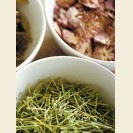
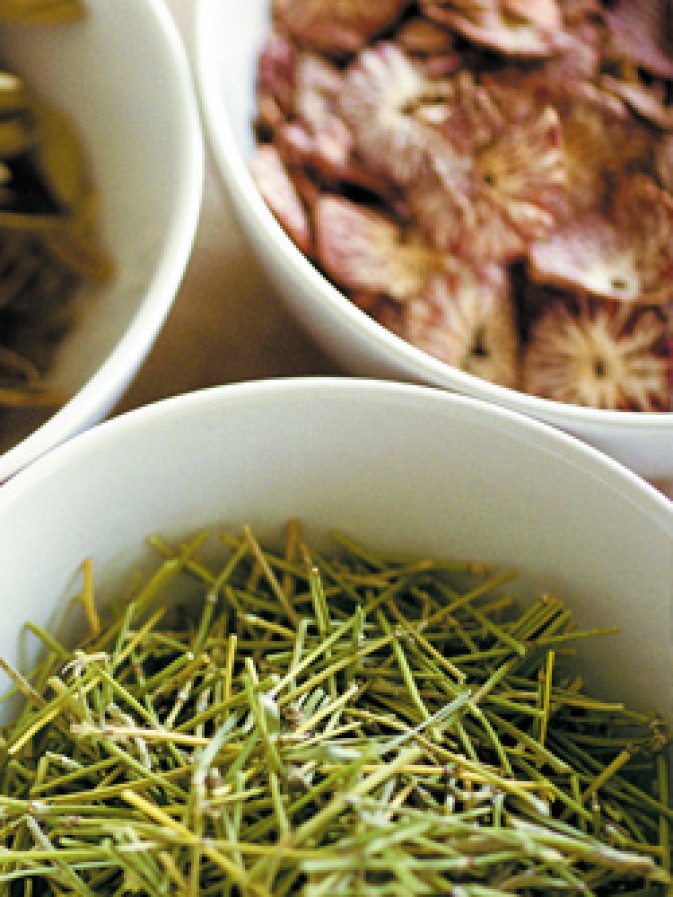
TCM treatment is based on “identifying the ailment before curing”. To treat a disease, one must first understand its symptoms before applying medication. Autumn and winter is the peak period for upper respiratory tract ailments and coughing is one of their symptoms. We can know the symptoms and features of coughs.
Previously, we explain the time, frequency, nature and sound of the coughing, and the related factors that worsen the symptoms. Now, we discuss and learn about an important factor of coughing – phlegm – by analysing the intensity of its colour, its viscosity, quantity and taste.
Coughing with a small amount of phlegm is mostly dry-heat. The symptoms of dry-heat invading the lungs are dry coughs, no phlegm or small amount of stringy, sticky phlegm or blood streaks in the phlegm. The symptoms of liver-fire invading the lungs are occasional reflexive coughing, dry throat, frequent sensation of the throat being clogged by phlegm, small quantity of sticky phlegm, or stringy phlegm. If the lungs have weak yin, there will be dry coughing with a small volume of sticky, white phlegm or blood in the phlegm. Coughing with a large amount of phlegm is wet-phlegm coughing. Coughing with symptoms of phlegm-wetness deposited in the lungs are repeated coughing, large quantities of phlegm, coughing due to the presence of phlegm, and coughing stops when phlegm is expelled. The phlegm is sticky, viscous, and is white or grey in colour. Coughing with symptoms of phlegm-heat depressing the lungs are heavy breathing or rattling in the throat due to the presence of phlegm, copious amounts of phlegm, thick phlegm, yellow phlegm, presence of phlegm despite frequent spitting, phlegm with a wet, bloody taste, or spitting phlegm with blood. Coughing with symptoms of wind-cold invading the lungs are copious amounts of white phlegm with traces of bubbles. Phlegm that is white and thin is mostly the result of hollow-cold. Phlegm that is white and thick, and easily expelled is mostly the result of wetness. Yellow and sticky phlegm is caused by heat. White and sticky phlegm is mostly due to weak yin and dry heat. White, clear phlegm with bubbles is caused by hollowness and cold. Bloody phlegm is mostly caused by heat in the lungs or weak yin. Phlegm with a hot bloody taste or fishy taste is phlegm-heat. Phlegm that has a sweet taste is phlegm-wetness, while phlegm that is salty indicates weak kidneys.
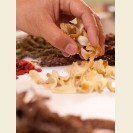
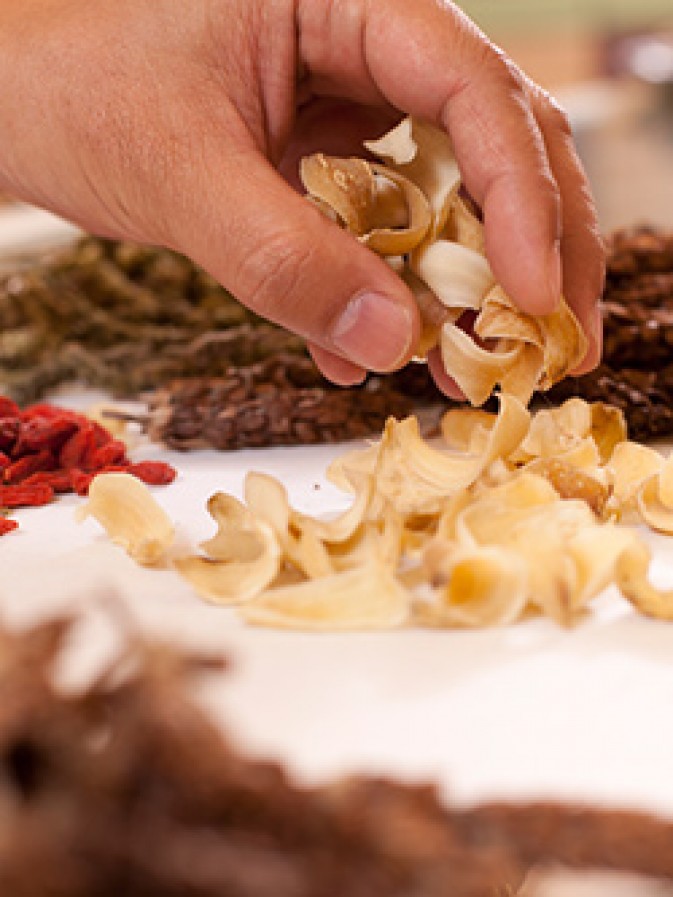
TCM treatment is based on “identifying the ailment before curing”. To treat a disease, one must first understand its symptoms before applying medication. Early autumn is the peak period for upper respiratory tract ailments and coughing is one of their symptoms. We can know the symptoms and features of coughs from the following two aspects:
First of all, know the time, frequency, nature and sound of the cough, and the factors that make it worse.
If the coughing is rapid with a heavy sound, if it occurs more frequently in the daytime than at night, or it is caused by an itchiness in the throat, then it is likely to be caused by an infection of the upper respiratory tract resulting from external wind-cold or wind-heat. If the sound of coughing is hoarse, the coughs come quickly and the illness escalates rapidly accompanied by fever, then it is caused by external wind-cold, dry heat or acute infection of the upper respiratory tract. If the coughs come slowly and persist for a long time, it is due to a deficiency in yin-energy or qi. If the sound of the cough is rough and strong, it is due to wind-heat or phlegm-heat causing internal damage to the saliva.
If the coughing is weak with a low sound, it is a hollow-cold cough; if it is loud, it is a solid cough that is caused by heat or dry-heat. Violent coughing in the morning with strong sounds, whose frequency is reduced after expelling the phlegm, is mostly a wet-phlegm cough or a wet-phlegm-turned-heat cough. Afternoon and evening single-sound, faint and short coughs are usually the result of weak yin-energy or dry lungs. When coughing worsens in bed at night and persists, to the extent that the cougher cannot lie down and has to sit up to cough, or when the cougher has shortness of breath or is panting, he is suffering from hollow-cold ailments that cause persistent coughing that results in panting. Coughing that worsens due to fatty, sweet, raw and cold foods is wet phlegm coughing. Coughing that worsens due to blocked breathing, depressive moods, mental provocation and anger is blocked-breathing and phlegm-fire coughing. Coughing that worsens due to tiredness and feeling cold is mostly phlegm-wetness and hollow-cold coughing.
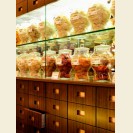
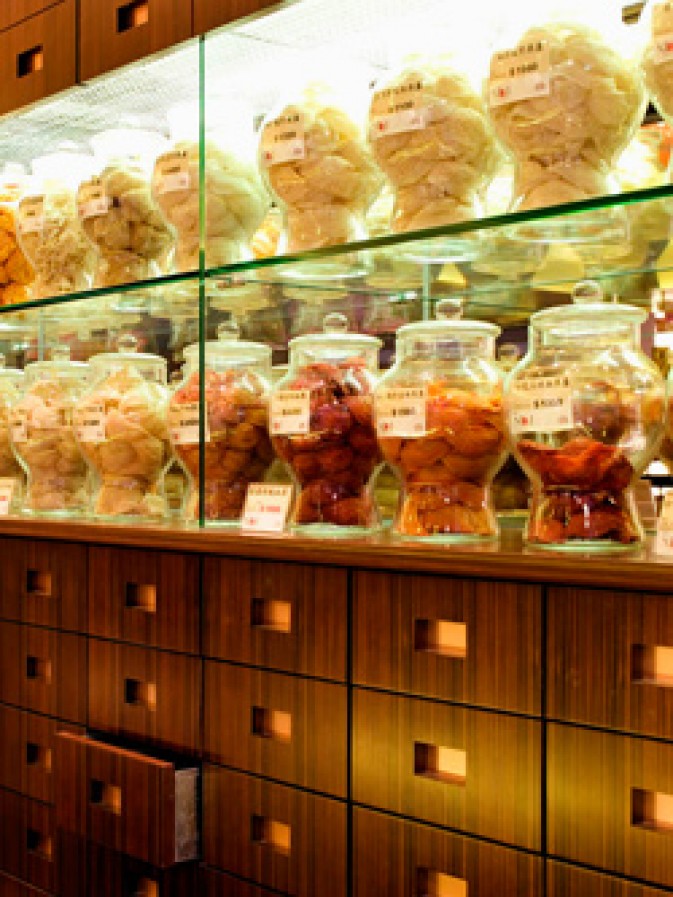
Early autumn is when the weather turns demonstrably cool and the air becomes dry. We often hear people around us coughing uncontrollably, especially in crowded public places or on public transport. It is possible that they are suffering from upper respiratory tract diseases.
Coughing is an upper respiratory tract ailment. The upper respiratory tract includes the nose, nasal passages, nasal cavity, throat and windpipe. Upper respiratory tract infections such as acute and chronic bronchitis, bronchiectasis, pneumonia and chronic laryngitis are usually accompanied by coughing.
In TCM, coughing is mainly divided into external infection coughing and internal injury coughing. The former is due to the invasion of the lungs and the upper respiratory tract by the Six Excessive Atmospheric Influences (wind, cold, heat, moisture, dry heat and fire). The latter occurs due to the dysfunction of internal organs spreading to the lungs. Coughing is very closely related to qi and phlegm; it is categorised into three categories: audible coughing without phlegm (ke), inaudible coughing with phlegm (sou) and audible coughing with phlegm (kesou).
External infection coughing is usually caused by to the invasion of the lungs and the upper respiratory tract by the Six Excessive Atmospheric Influences. However, all four seasons are different and the invading influences are also different. Hence, the symptoms of coughing are expressed differently: winter-cold, spring-heat, summer-moist and autumn-dry heat. The most common infection within the four seasons is wind-cold coughing. The major atmospheric influence is caused due to the wind. External infection coughing is caused by the wind, and wind is the leading influence in the four seasons and the cold-influence, heat-influence, moist-influence and dry heat-influence brought about by Wind-Influence will cause wind-cold, wind-heat, wind-moist, wind-dry heat, etc.
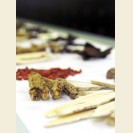
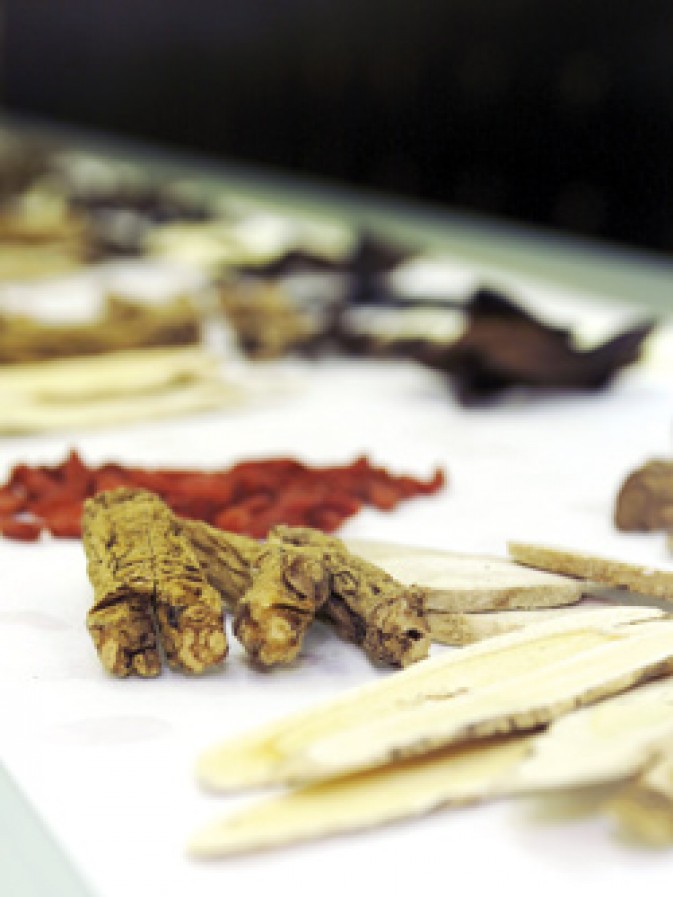
“Nourish yang in spring and summer; nourish yin in autumn and winter”
Based on the unique features of the changes in the yin and yang in the four seasons, TCM physicians recommend nourishing and strengthening the body through one’s diet.
Spring The focus is on nourishing and cleansing the liver by clearing out the excess substances absorbed during the winter. Isatis Root and Japanese Honeysuckle Flower, which clear heat-toxins; Dried Tangerine Peel, which adjusts the liver-qi; and Chrysanthemum Flower, which calms the liver-wind, can be consumed.
Summer The focus is on expelling heat and “wetness”, and quenching thirst, to prevent heat strokes and harmonise the spleen and stomach. Medicinal herbs that strengthens the qi and quenches the thirst such as American Ginseng, Dendrobium, Dwarf Lilyturf Tuber, Lotus Leaf and White Hyacinth Bean can be consumed.
Autumn The focus is on nourishing the yin energy, quenching thirst, moistening the lungs to nourish, reduce heat, replenish the core and strengthen the qi. Cleansing and moistening products such as American Ginseng, Ginseng, Coastal Glehnia Root, Lily Bulb, Fragrant Solomonseal Rhizome and Cochinchinese Asparagus Root can be consumed.
Winter The focus is on replenishing the kidneys and strengthening the qi to improve immunity and strengthen the constitution. Strengthening and fortifying tonics such as Ginseng, Chinese Caterpillar Fungus, Pilose Antler and Bird’s Nest can be consumed.
The above information is only for reference. For details, please consult your Wai Yuen Tong registered Chinese Medicine Practitioners.